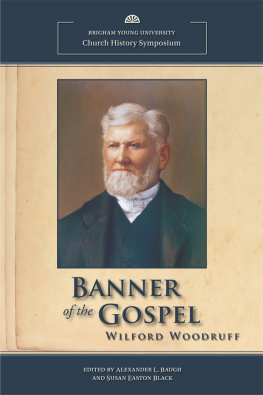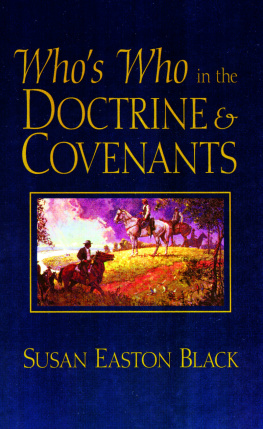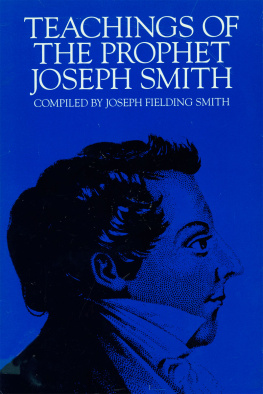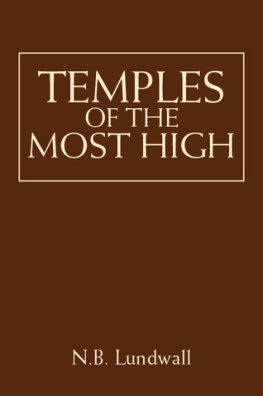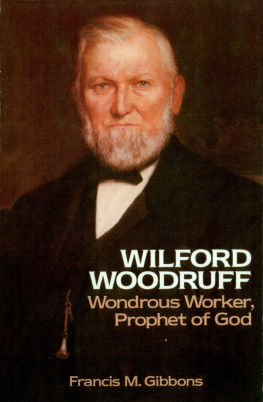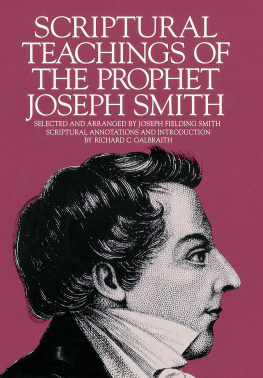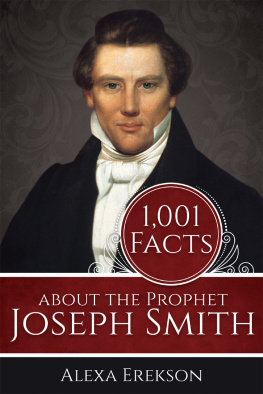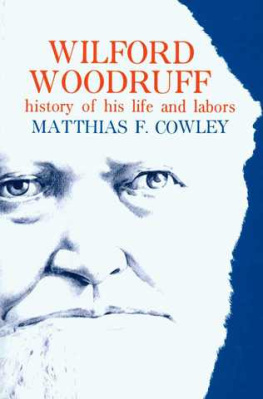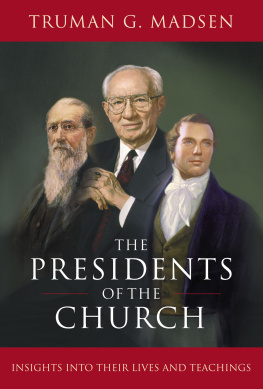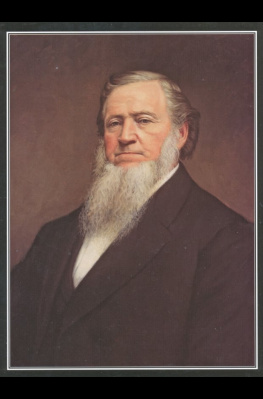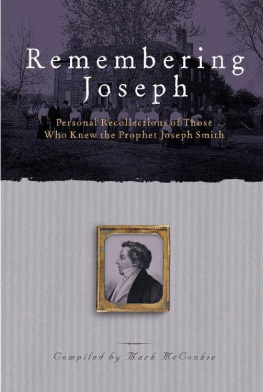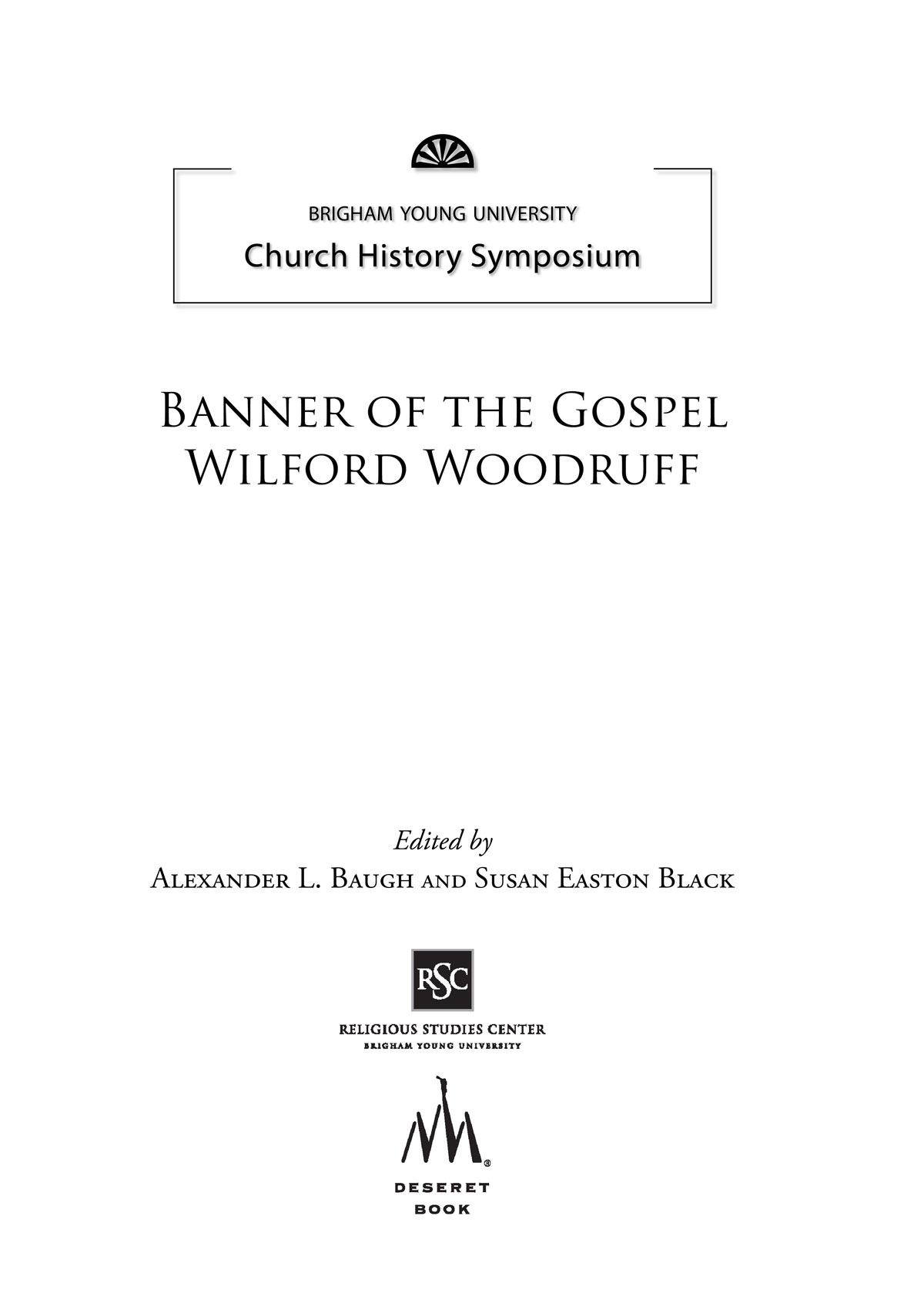Susan Easton Black - Banner of the Gospel: Wilford Woodruff
Here you can read online Susan Easton Black - Banner of the Gospel: Wilford Woodruff full text of the book (entire story) in english for free. Download pdf and epub, get meaning, cover and reviews about this ebook. year: 2010, publisher: Deseret Book Company, genre: Home and family. Description of the work, (preface) as well as reviews are available. Best literature library LitArk.com created for fans of good reading and offers a wide selection of genres:
Romance novel
Science fiction
Adventure
Detective
Science
History
Home and family
Prose
Art
Politics
Computer
Non-fiction
Religion
Business
Children
Humor
Choose a favorite category and find really read worthwhile books. Enjoy immersion in the world of imagination, feel the emotions of the characters or learn something new for yourself, make an fascinating discovery.
- Book:Banner of the Gospel: Wilford Woodruff
- Author:
- Publisher:Deseret Book Company
- Genre:
- Year:2010
- Rating:5 / 5
- Favourites:Add to favourites
- Your mark:
Banner of the Gospel: Wilford Woodruff: summary, description and annotation
We offer to read an annotation, description, summary or preface (depends on what the author of the book "Banner of the Gospel: Wilford Woodruff" wrote himself). If you haven't found the necessary information about the book — write in the comments, we will try to find it.
Wilford Woodruff was different from his predecessors and successors in one particular way he left an incredibly detailed handwritten record that spanned more than sixty years, of nearly everything he did and experienced. Reflecting on his personal effort to keep a regular journal, he remarked:
When the Prophet Joseph organized the Quorum of the Twelve, he counseled them to keep a history of their lives. I made a record from the first sermon I heard, and from that day until now I have kept a daily journal. Whenever I heard Joseph Smith preach, teach, or prophesy, I always felt it my duty to write it. I would write the history of that Church and leave on record the works and teachings of the prophets, of the apostles and elders. I have recorded nearly all the sermons and teachings that I ever heard from the Prophet Joseph, I have in my journal many of the sermons of President Brigham Young, and such men as Orson Hyde, Parley P. Pratt and others.
Through his skillful, inspired leadership and direction, he helped bring about accommodation and change, leading the Church into the social, cultural, and religious mainstream of American society. Thomas G. Alexander, one of Woodruffs biographers, observed:
He is arguably the third most important figure in all of LDS church history after Joseph Smith, who began Mormonism, and Brigham Young, who led the Saints to Utah and supervised the early colonization of the intermountain west. . .
Relatively well-educated, well-read, and well-traveled, Woodruff combined a creative mind, practical inventiveness, and physical vigor with a sense of personal piety unsurpassed by any nineteenth-century leader. Woodruff blended formally educated but rough-hewn intellectual gifts. . . [and] a firm dependence on inspiration. . . with a strong sense of personal destiny and Providential protection.
This unique combination of temporal shrewdness and spiritual insight dwelled in a mind and body absolutely committed to Mormonism and unquestioningly loyal to his colleagues and to the Saints.
This book is a selection of presentations from the annual BYU Church History Symposium hosted by BYU Religious Education to honor Wilford Woodruff and to celebrate the two hundredth anniversary of his birth.
Table of Contents:
Preface Alexander L. Baugh and Susan Easton Black
Images of Wilford Woodruffs Life: A Photographic Journey Alexander L. Baugh
Wilford Woodruff and the Gathering of Modern-day Israel, 1834-50 Fred E. Woods
The Lord Told Me to Go and I Went: Wilford Woodruffs Missions to the Fox Islands, 1837-38 Jason E. Thompson
Wilford Woodruff: Missionary in Herefordshire - Cynthia Doxey Green
To Every Man Is Given a Gift: The Spiritual Legacy of Wilford Woodruff Alonzo L. Gaskill
Wilford Woodruff: A Founding Father of the Mormon Academies Scott C. Esplin
Wilford Woodruff and the Rise of Temple Consciousness Among the Latter-day Saints, 1877-84 Richard E. Bennett
A Friendship Forged in Exile: Wilford Woodruff and the William Atkin Family Reid L Neilson
The Odyssey of a Latter-day Prophet: Wilford Woodruff and the Manifesto of 1890 Thomas G. Alexander
Wilford Woodruffs 1897 Testimony Richard Neitzel Holzapfel and Stephen H. Smoot
Wilford Woodruff Chronology Alexander L. Baugh
Index
Susan Easton Black: author's other books
Who wrote Banner of the Gospel: Wilford Woodruff? Find out the surname, the name of the author of the book and a list of all author's works by series.

